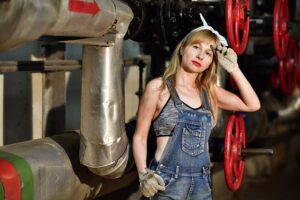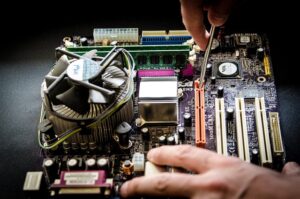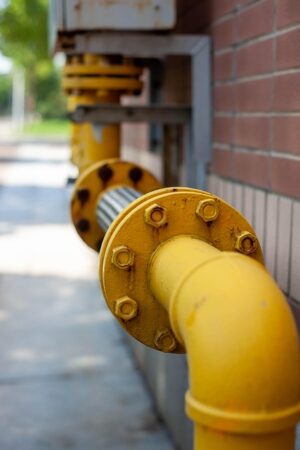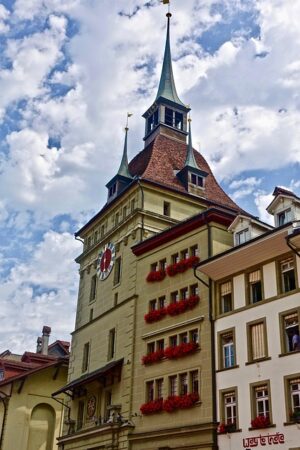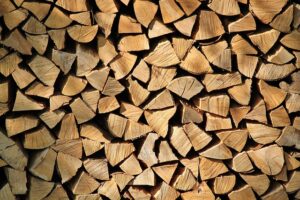Industrial unit heaters are essential for maintaining worker safety and comfort in various settings, complying with OSHA standards. Gas-fired and electric models offer advanced heating technologies, precise control, and specific BTU ratings, catering to diverse space requirements. Forced air systems ensure uniform temperature distribution while minimizing fire risks. Strategic selection and regular maintenance of these heaters optimize efficiency, energy costs, and the overall safety of manufacturing operations.
“In the realm of industrial operations, maintaining safe and efficient workspaces is paramount. This is where industrial unit heaters play a pivotal role, especially regarding OSHA (Occupational Safety and Health Administration) safety standards. This article delves into the essential aspects of industrial unit heaters, their energy-efficient design, and how they meet OSHA’s rigorous guidelines.
We’ll explore key features ensuring optimal performance, address common challenges in compliance, and provide best practices for selection and maintenance, all focused on enhancing workplace safety while optimizing operational efficiency.”
- Understanding OSHA Safety Standards for Industrial Environments
- Key Features of Efficient Industrial Unit Heaters
- Compliance with OSHA Regulations: Heating Systems' Role
- Common Challenges in Meeting Safety and Efficiency Goals
- Best Practices for Selecting and Maintaining Unit Heaters
Understanding OSHA Safety Standards for Industrial Environments

In industrial environments, ensuring worker safety and comfort is paramount, which is where OSHA (Occupational Safety and Health Administration) steps in with its comprehensive safety standards. These guidelines are designed to protect employees in various industries, including manufacturing facilities and warehouses, from potential hazards. When it comes to heating these spaces, industrial unit heaters play a crucial role in meeting OSHA requirements while maintaining efficiency.
OSHA sets specific standards for commercial heating systems, focusing on factors like BTU ratings, proper ventilation, and safe installation practices. Gas-fired heaters and electric unit heaters, commonly used in industrial applications, must adhere to these regulations. Suspended heaters or forced air heating systems, for instance, need to be installed correctly to prevent accidents. By understanding and implementing these safety standards, manufacturers and warehouse managers can create a safer work environment, ensuring the well-being of their workforce while optimizing heavy-duty construction processes through effective industrial heating solutions.
Key Features of Efficient Industrial Unit Heaters

Industrial unit heaters designed for efficiency and safety are integral to maintaining optimal working conditions in various industrial settings, including warehouse heating and manufacturing facilities. Key features driving this include heavy-duty construction, ensuring they withstand harsh environments, and advanced heating technologies like forced air heating or gas fired heaters. These systems offer precise control over temperature and airflow, catering to diverse needs across different commercial heating applications.
Moreover, electric unit heaters equipped with suspended heaters often incorporate smart controls and high BTU ratings, enhancing energy efficiency. They are designed for easy installation and maintenance, making them versatile solutions for a range of industrial applications. Such heaters prioritize safety by adhering to stringent OSHA standards, integrating features that prevent accidents and ensure the well-being of workers in these environments.
Compliance with OSHA Regulations: Heating Systems' Role

In the realm of industrial operations, compliance with Occupational Safety and Health Administration (OSHA) regulations is paramount to ensure worker safety and productivity. Heating systems play a crucial role in this context, especially in environments like manufacturing facilities and warehouses where maintaining optimal temperatures is essential. Industrial unit heaters, designed for heavy-duty construction and industrial applications, offer both efficiency and safety features that align with OSHA standards.
These specialized heaters, encompassing gas fired heaters, electric unit heaters, and suspended heaters, are equipped with advanced mechanisms to control temperature and prevent excessive heating. Forced air heating systems, for instance, provide uniform distribution of heated air, minimizing hot spots and the risk of burns or fires—a significant concern in industrial settings. Moreover, each type features distinct BTU ratings catering to varying space requirements, ensuring energy efficiency without compromising safety in commercial heating scenarios.
Common Challenges in Meeting Safety and Efficiency Goals

In the realm of industrial applications, ensuring both safety and efficiency is paramount, especially when it comes to warehouse heating and manufacturing facilities. When selecting or specifying industrial unit heaters, navigating through common challenges can be a hurdle. One significant hurdle is balancing robust performance with adherence to Occupational Safety and Health Administration (OSHA) standards, particularly in heavy-duty construction settings where high BTU ratings are often required.
Another challenge lies in the variety of available heating solutions, such as gas fired heaters and electric unit heaters, each offering distinct advantages and use cases. For instance, suspended heaters are ideal for large, open spaces, while forced air heating systems excel at providing uniform temperature control across commercial heating environments. Understanding these nuances is crucial to selecting suitable heaters that not only meet OSHA safety guidelines but also optimize efficiency, ensuring the longevity and safety of operations in manufacturing facilities.
Best Practices for Selecting and Maintaining Unit Heaters

When selecting industrial unit heaters for your warehouse heating or manufacturing facilities needs, best practices involve considering several key factors to ensure safety and efficiency. Firstly, understand the specific requirements of your heavy-duty construction and industrial applications. Different types of heaters, such as gas fired heaters or electric unit heaters, offer varying BTU ratings suitable for diverse environments. Forced air heating systems are particularly efficient in large, open spaces.
Regular maintenance is paramount for optimal performance and longevity. For suspended heaters, ensure routine inspections and cleaning to prevent dust buildup. Keep records of service and replace components as needed. In commercial heating, a proactive approach saves energy costs and minimises downtime. Select reputable brands known for their quality and reliability in industrial applications, ensuring your investment stands the test of time.
Industrial unit heaters play a critical role in ensuring workplace safety and efficiency, as evidenced by OSHA standards. By understanding these standards and implementing best practices during selection and maintenance, businesses can mitigate risks, improve productivity, and avoid costly compliance issues. Key features like advanced heating technology, precise temperature control, and robust construction contribute to both safety and energy efficiency. Addressing common challenges through proactive strategies ensures industrial unit heaters meet their full potential, creating a safer, more productive work environment.

